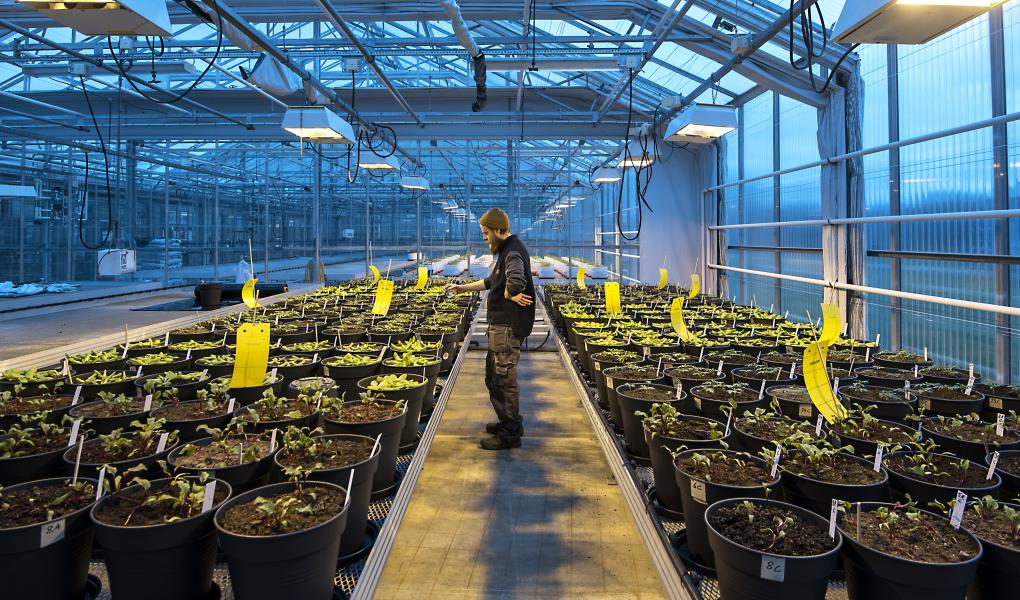100 marigold seeds are planted in each soil type and, after six weeks of growth without nutrient supplements, the plants are harvested. The size, leaves, flowers, weight, and root system development of the plants are rated from 1 to 10, with 10 being the highest, and the results are combined into an overall rating. The lab also conducts a nutrient analysis of the six soil types before and after the growing period.
Growth Test: Two bags per brand are mixed into a homogeneous blend in a large container. Ten 6-liter pots were filled with soil from each brand. Ten marigold (Tagetes Patula) seeds are sown in each pot to ensure at least five seeds per pot would germinate.
The 60 pots were randomized on a flood table in a greenhouse set at 22°C. The seeds germinated and the plants grew for six weeks. The pots were watered with the same amount of water, without nutrients, twice a week.
Growth in the different soils is photographed and documented throughout the growth period, focusing on plant lushness, uniformity, leaf color, and flower development. After six weeks, a final visual assessment of the growth results in the different soils is made, evaluating both above-ground plant development and the root system.
To obtain an objective measure of growth, the above-ground biomass (leaves, flowers, and stems) is harvested and weighed in both fresh and dried conditions. All reported results are averages from ten pots per brand.
Soil Analysis: Samples from all soils are analyzed for macro- and micronutrients, pH value, and conductivity. The key macronutrients are nitrogen, phosphorus, and potassium, all essential for plant growth. Nutrient-rich soil must contain sufficient amounts of each element, and their ratios are also important.
Micronutrients such as manganese, boron, iron, and aluminum are also important for plant development but are needed in microscopic amounts compared to macronutrients.
However, nutrient-rich soil alone is not sufficient. Several factors affect nutrient uptake by plants, such as pH value and oxygen availability for root respiration. A pH of 5.8 is considered optimal for most plant species, with a range of 5.0–7.0 being effective.
Soil Structure: In a final step, the laboratory assesses the structure of the different soils. Good soil should be airy to provide enough oxygen to the roots while retaining water without it draining straight through. If the soil is too dense with larger, firmer clumps, it hinders oxygen uptake for the roots.
Interpretation and Rating of Test Results: The interpretation and rating of the test results are done in consultation with the laboratory. The ratings of the different soils are based solely on the growth results. The soil analysis results are only used to explain and guide the differences in growth results.
In the overall rating, the different parts of the growth results are weighted as follows:
- Assessment of lushness, leaves, and flowers: 60%
- Assessment of the root system: 20%
- Growth in weight: 20%

